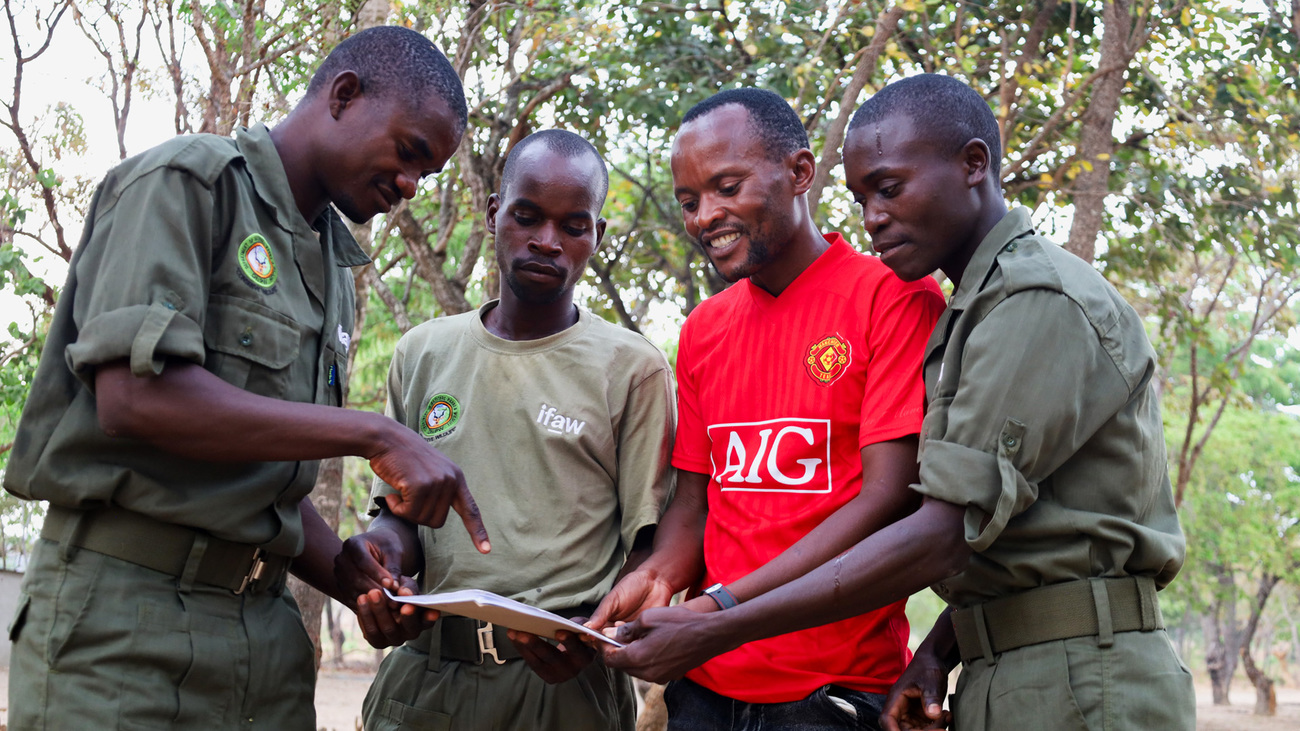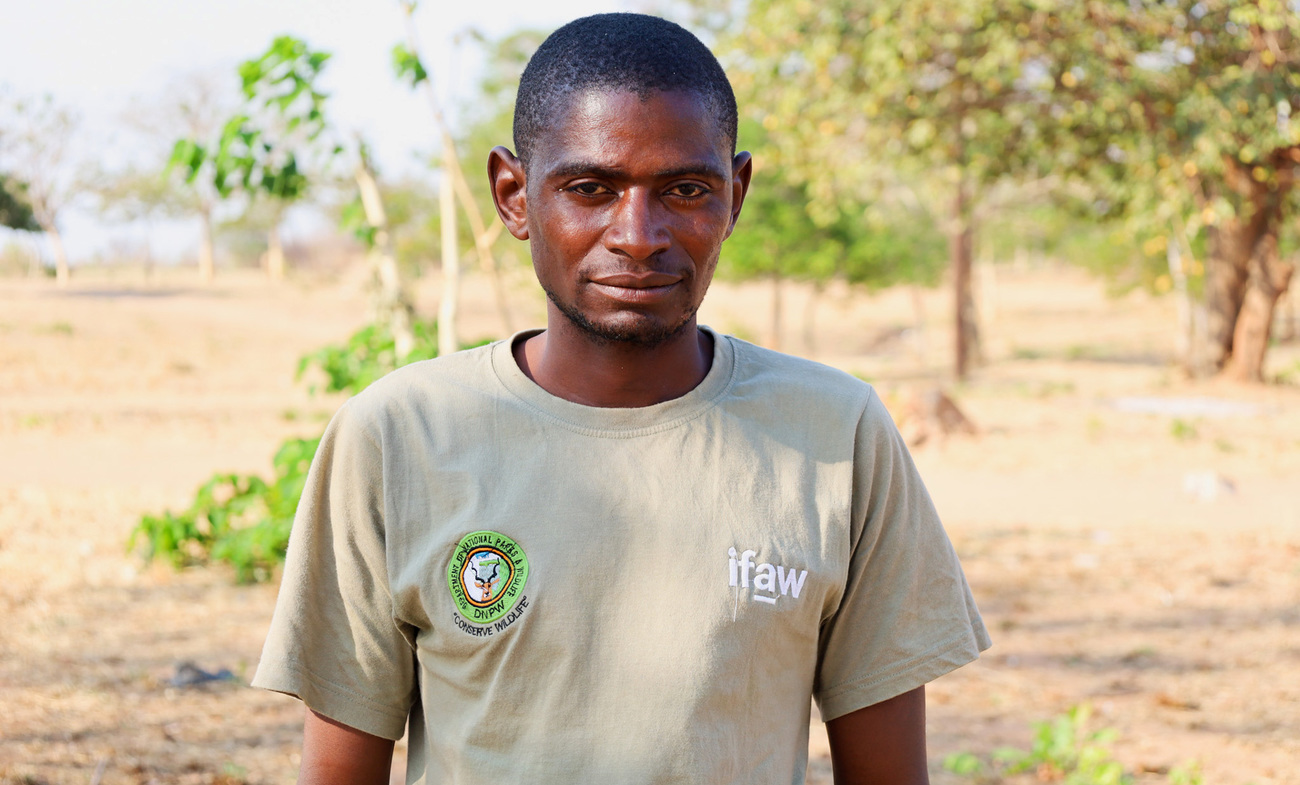Empowering communities to lead conservation efforts in Zambia
Empowering communities to lead conservation efforts in Zambia
By Zanji Valerie Sinkala, writer based in Lusaka, Zambia.
It took one tragic afternoon for Moffat Nyirongo to commit his life to conservation.
That afternoon, he watched hopelessly as a large herd of elephants laid waste to the land he had tended for months, eating every stalk of the bumper maize crop, robbing his family of their staple food and the income that would have paid for the children’s school fees and other necessities.

This scenario regularly plays out in communities that share frontiers with wildlife sanctuaries, more so for subsistence farmers living near Lukusuzi National Park and Luambe National Parks in Zambia’s Eastern Province. They have found themselves increasingly at odds with elephants as both compete for limited resources.
Frustrated villagers losing their livelihoods often seek to eliminate the animals, but for Moffat and his colleagues, the story is fascinatingly different. Instead of seeking vengeance against the world’s largest land animal, he decided to work hard to find ways of ensuring animals and people can coexist in the same landscapes. Nearly a year and a half after the tragedy, Moffat is a leading voice among passionate young people who promote peaceful coexistence between people and wildlife in the Lukusuzi–Lundazi landscape.
Promoting community-level response to human-elephant conflict
In October 2024, Moffat was among 43 volunteers who completed training to become Primary Response Team (PRT) members. These teams of passionate and dedicated young people are the first line of defence in addressing human-wildlife conflict situations.
The training, facilitated by IFAW and Zambia’s Department of National Parks and Wildlife (DNPW), teaches participants essential skills and knowledge to manage and mitigate human-wildlife conflict.
‘Establishing PRTs invests in community-level response and is a powerful way to tackle human-wildlife conflict,’ says Simbarashe Chiseva, IFAW’s Community Development Officer, who has successfully set up many PRTs in his home country of Zimbabwe.
PRTs educate local communities on the dos and don’ts of human-wildlife conflict to ensure safety. Very importantly, they collect data on human-elephant conflict incidents and elephant movements using Geographic Information System (GIS) technology. The information feeds back to DNPW experts, who can launch an immediate response if necessary and develop mitigation techniques to prevent similar events.
For Moffat, who dreams of becoming a wildlife officer, this initiative is crucial in giving local communities the practical guidance and tools they need to prevent and respond to human-wildlife conflicts.
‘IFAW is helping us make a difference by changing the attitudes of our community and protecting the environment,’ says Moffat.
Strengthening community-based natural resources management
IFAW’s work to create more resilient communities in wildlife-rich areas stretches far beyond training grassroots teams like PRTs in southern and East Africa.

Community Resource Boards (CRBs) in Zambia have played a key role in promoting community leadership in the sustainable use and management of natural resources since 1980. The CRBs facilitate the transfer of rights from the government to local communities for natural resource use, benefiting community development and livelihoods.
IFAW recently joined forces with the DNPW Zambia to establish the Mwase–Lundazi CRB, an important effort to help communities take care of and protect natural resources.
According to the 2022 census, Lundazi District is home to approximately 154,908 people. This region faces unique challenges as it is a hotspot for human-elephant interactions.
‘We live near Kasungu National Park and often face problems with elephants,’ says Mwase–Lundzai CRB Chairperson Robert Jere. ‘Now, we have the knowledge and skills to care for our environment and coexist peacefully with wildlife.’
IFAW Country Director Patricio Ndadzela and team of local experts, work hard to promote local leadership on these issues.
‘Our approach is to help communities coexisting with wildlife find unique solutions to their challenges,’ Patricio says. ‘The Mwase–Lundazi CRB will play an important role in enhancing leadership and participation at the grassroots level.’
Promoting cross-border peer education
IFAW's Room to Roam is an important collaborative initiative aimed at securing and connecting habitats, allowing elephants and other wildlife to travel freely throughout their home ranges. To create a network of connected and critical landscapes that support both wildlife and people, IFAW is building lasting partnerships with communities, traditional leaders, government agencies, private sector stakeholders, and other NGOs.
Currently, seven million people live in the buffer zones of the Room to Roam landscapes, with 28% of the land traditionally owned. IFAW recognises the importance of traditional leaders in advancing conservation efforts and collaborates with them in Kenya, Zambia, Malawi, and Zimbabwe to address conservation challenges effectively.
This has included facilitating cross-border learning between traditional leaders from the Malawi–Zambia transfrontier conservation area, supported by the Conservation Network of Traditional Leaders in Africa. Through this work, we aim to ensure that conservation efforts are community-centred.
Assisting communities to enable conservation
In the Lukusuzi–Lundazi landscape, we are working with communities to reduce people’s reliance on natural resources by helping them develop skills that support alternative livelihood opportunities.
In partnership with the Chitungulu CRB and DNPW Zambia, IFAW has trained 45 women from Chitungulu village for three women's clubs centred on the Village Savings and Loans Association (VLSA) model. This project helps vulnerable and impoverished women learn money management skills to improve their financial security. Not only does this help them better navigate human-wildlife conflict and its economic impacts, but it also improves the security of their homes and families.
Learn more about Room to Roam >>
Related content
Every problem has a solution, every solution needs support.
The problems we face are urgent, complicated, and resistant to change. Real solutions demand creativity, hard work, and involvement from people like you.